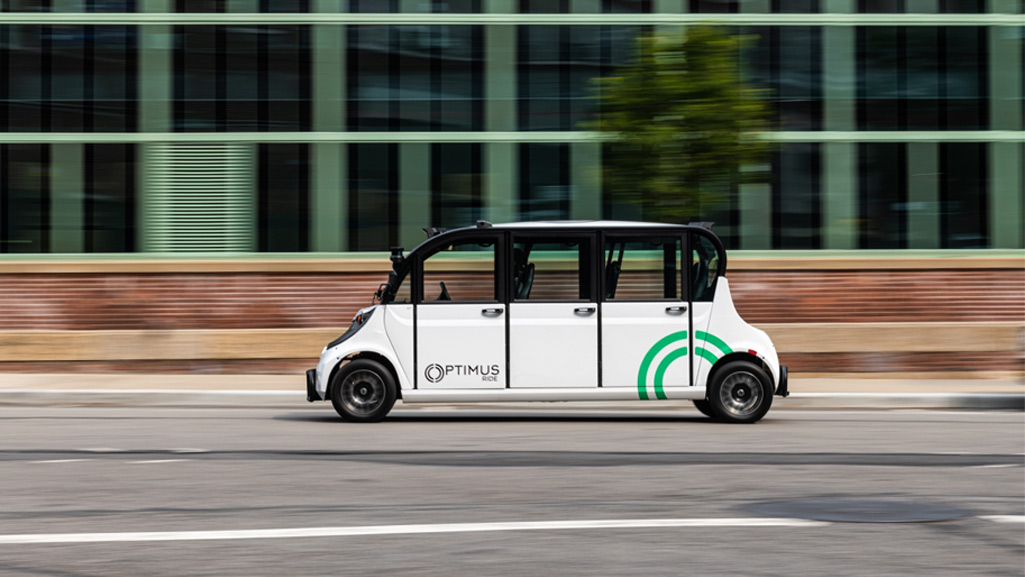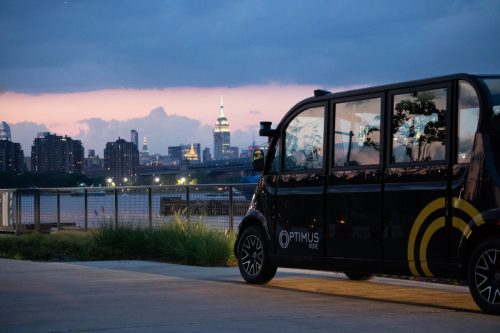The first self-driving shuttles have been rolling in New York since this summer. Numerous other cities around the world, such as Singapore, Sydney and Hamburg, are also testing such driverless minibuses. Experts agree that autonomous vehicles offer numerous opportunities for public transport, and in the process, they may be able to help solve the transport problems of our time. The German research project “LEA (mini) bus” focuses on what is necessary to take these self-driving shuttles from test operation to regular operation.
Up to now, self-driving minibuses are only independent to a very limited extent. In New York, the six-seat connected and autonomous vehicles (CAV) are only driving in the Brooklyn Navy Yard, a 300-hectare industrial test area set apart from the rest of the city. They always have two safety drivers on board. In Hamburg, the self-driving shuttle travels a 1.8 km-long route in the Hafencity at speeds of 15 to maximum 25 km/h – and of course also with a person aboard.
“Today, we are still far away from regular operation of CAVs on public roads. There are still a lot of technical hurdles. Even leaves that fall on the street can currently bring the vehicles to a standstill. And there are still steps to be taken with regard to networking of the vehicles with one another and with the infrastructure. Thus far, mixed traffic with conventional cars has not been conceivable. The hold-up is not just the technical sophistication; the legal framework has also not been sufficiently clarified,” explains Inga Luchmann of the PTV Research Team, that managed the research project. “Furthermore, there are other questions relating to personal safety. How safe would I, as a woman, feel on the bus if there is no driver or person on board to whom I can turn in an emergency?”
The scientists regarded this topic from all angles. Their focus was on not just legal and technical aspects, but also the design of the infrastructure, the operation, and economic aspects, as well as acceptance in society. They painted a complete picture by evaluating previous experiences from national and international test operations, conducting literature research and surveying experts from a wide variety of areas (e.g. the law, vehicle manufacturers, transport operators, authorities).
Simulation reveals possibilities for deployment
However, the research team went one step further and dared to take a look into the future: How might regular operation of self-driving shuttle buses look once all of these hurdles are eliminated? In a real traffic model based on PTV Visum, which maps various traffic situations, the deployment possibilities were simulated in three different traffic situations: In a residential area on the edge of a large city with commuter rail connection, in a medium-sized city with core area and peripheral districts, and in a rural community. Two scenarios were played out here: One the one hand, what happens if the existing bus line traffic with a timetable and fixed stops is handled by connected and autonomous vehicles instead of a conventional diesel bus? On the other hand, the current regular service was replaced completely with fully automated on-demand service. What effects do these two scenarios have on vehicle requirements, operating costs and wait times for the users?
“Of course, there is a lot of potential for fully automated on-demand service in rural areas where demand is weak and not so many busses are running. Such a self-driving shuttle service would be extremely convenient for users at costs comparable to today’s costs. In the urban environment, deployment of driverless minibuses may make sense in outlying areas and at times when demand is weak,” reports Christian Reuter of PTV Transport Consult GmbH, who was responsible for the simulation.
However, if there is high demand and there are only limited opportunities to bundle trips, this can require very large vehicle fleets, which make operation inefficient.
“We have seen this in the example of the medium-sized city. There, demand at peak transit times was not directed only at the center; suddenly for on-demand transport, we needed 150 to 200 minibuses to fulfill demand. Therefore, regular service with standard buses makes more sense,” concludes the PTV consultant. “This shows that a general recommendation for or against the deployment of self-driving shuttle services is not possible. You always have to take the actual circumstances on-site into account. Only if I am familiar with the possible effects on my city, community or region can I make a well-founded decision. That’s why simulations are such a great tool.”
About the LEA (mini) bus research project
The two-year (2017-2019) project “LEA (mini) bus – research into the prerequisites and potential applications of automated and electrically powered (mini) buses in public transport” was funded by the Federal Ministry of Transport and Digital Infrastructure. It was carried out by a consortium consisting of PTV Planung Transport Verkehr AG (Management), PTV Transport Consult GmbH, the Karlsruhe Institute of Technology (KIT) and the consulting and audit firm Rödl & Partner.

